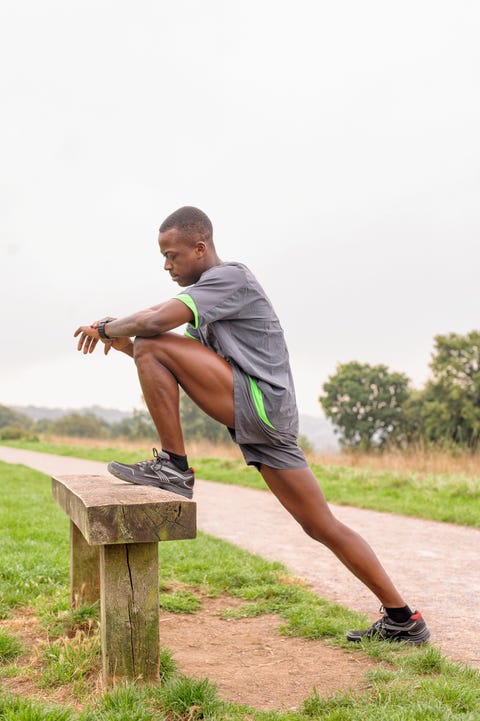The human heart beats like a metronome, right? All evenly spaced thumps and regular rhythms? Wrong.
When you’re at your healthiest, your heart is actually more like your six-Scotches-deep uncle whaling on the family drum set: The . . . … beats . . . are spaced…… . . . . . . . . . ……… unevenly.
It’s only when your body is stressed—either for a short-term reason (like a bad night of sleep, a cold, or an insane deadline) or a long-term one (like you’re a smoker, have a chronically stressful job, or root for a sports franchise in Cleveland)—that the beats are more sober and steady. (We know: We were surprised, too.)
This fluctuation is called heart rate variability, or HRV for short. And some experts say that you can give yourself an athletic edge by tracking and responding to changes in your HRV—especially now that wearable devices such as the Apple Watch, the Garmin Fenix, and Morpheus (an app-based health monitor) have started measuring it. Various NFL, NBA, and MLB teams and some UFC fighters have built their workout programs around HRV. Should you? It depends on where you stand on all this measuring.
How training by HRV works
Wearables collect your data and spit out an HRV “score,” which indicates whether your life stress over the past 24 hours or so has forced your HRV down or it’s remained resiliently up.
If your HRV is low, explains New York City–based cardiologist Johnny Lee, M.D., you’ll have more difficulty absorbing an intense training session, because you’ll just be dumping more stress into an already stressed system.
On the other hand, a high HRV indicates that your body has ample energy to devote to long-term health-enhancing projects. So if you work out hard when your HRV is high, the thinking goes, your body will dedicate its abundant energy to rebuilding muscle and improving your cardio system, says strength and conditioning coach Joel Jamieson, who has used HRV data with pro sports teams and the U. S. military.
The theory seems to hold: Scientists in Finland discovered that people who did HIIT when their HRV was high experienced larger fitness gains. Another study, by Spanish scientists, found that cyclists who tailored their training to their HRV saw their performance improve up to 14 percent more than those who relied on more traditional methods.
So using your HRV data to inform your training schedule should theoretically net you no junk workouts. Except, of course, there are detractors. They say the technology has quirks. It’s inexact (but good enough for pattern spotting). Getting the most accurate reading you can is a pain: One device recommends measuring before you get out of bed; those that track all day are prone to error; and random events like the onset of illness can affect your HRV score.

Jacobs Stock Photography LtdGetty Images
On top of this, Men’s Health fitness advisor Bill Hartman, P.T., C.S.C.S., says you really only need common sense to tell you if you’re ready for an intense workout. Rate yourself from one to five (one is lousy, five is great) on two questions: How did you sleep? And how do you feel? In lieu of measuring HRV, you’re assessing the two factors that most influence it. On days you rate fives, go hard. Days you’re below threes? Lay off a bit. “I’ve found this is as useful as all these monitoring devices,” says Hartman. In other words, you’ll still improve your fitness, but you’ll also save some dough and won’t be at the mercy of yet another thing that pings at you.
A week of HRV
Here’s how a morning HRV check might affect your training, based on readouts from the Apple Watch (which rates HRV usually from 20 to 90). Each device measures HRV differently, but over time you’ll get to know what’s high and low for you.
Mon AM
If your HRV readout is: 35
It could be due to: A bad night’s sleep.
So you might: Do a low-intensity cardio recovery workout and go to bed early.
Tues AM
If your HRV readout is: 71
It could be due to: Everything going well.
So you might: Opt for a seriously brutal strength-training session.
Wed AM
If your HRV readout is: 32
It could be due to: Yesterday’s training, which has left you wiped and sore.
So you might: Take it easy today.
Thurs AM
If your HRV readout is: 51
It could be due to: A good night’s sleep but a looming deadline at work.
So you might: Do a strength workout, but keep it to a medium intensity.
Fri AM
If your HRV readout is: 43
It could be due to: Going a bit too hard in that medium-intensity workout!
So you might: Go for a recovery walk.
Source: Read Full Article






